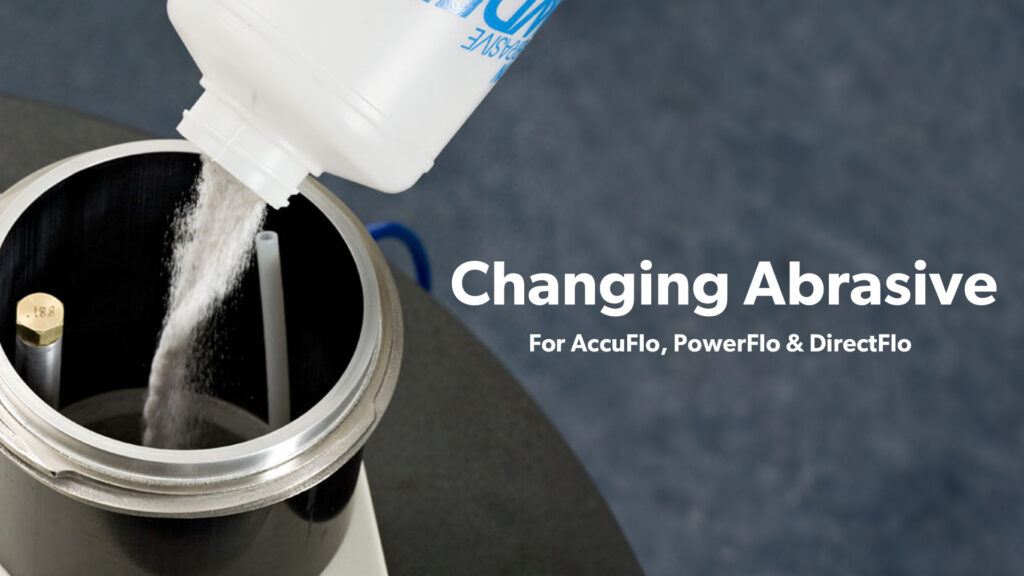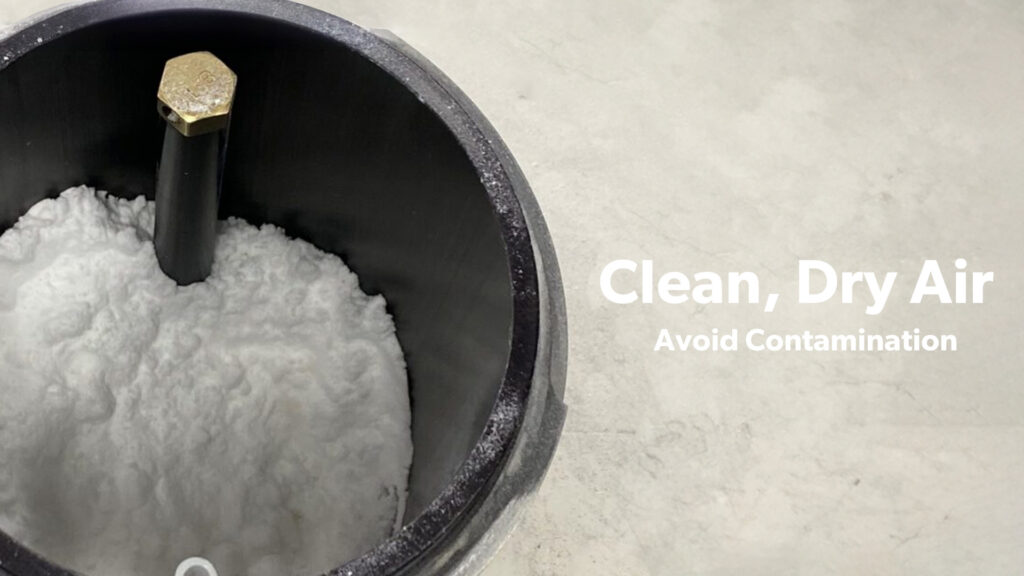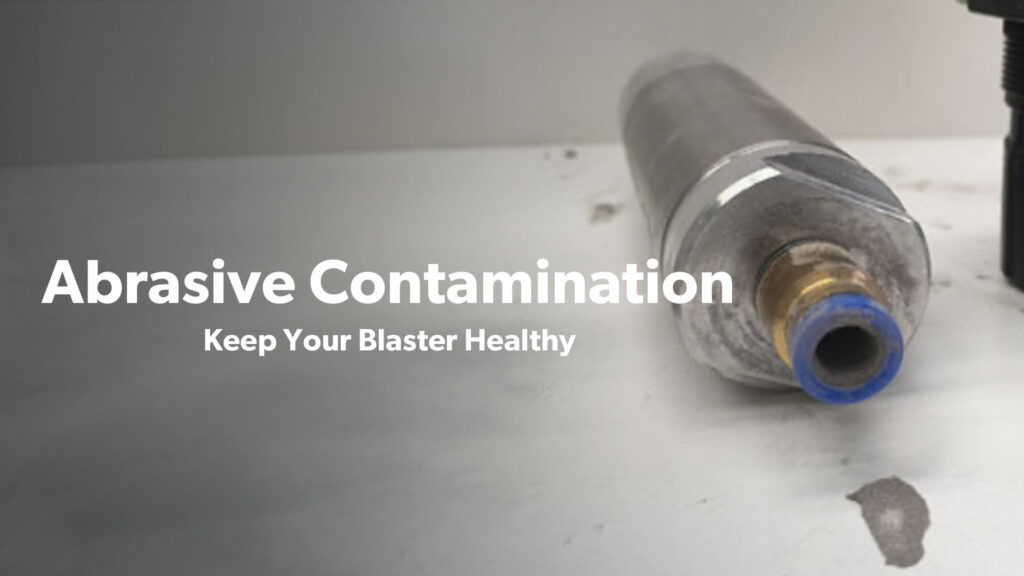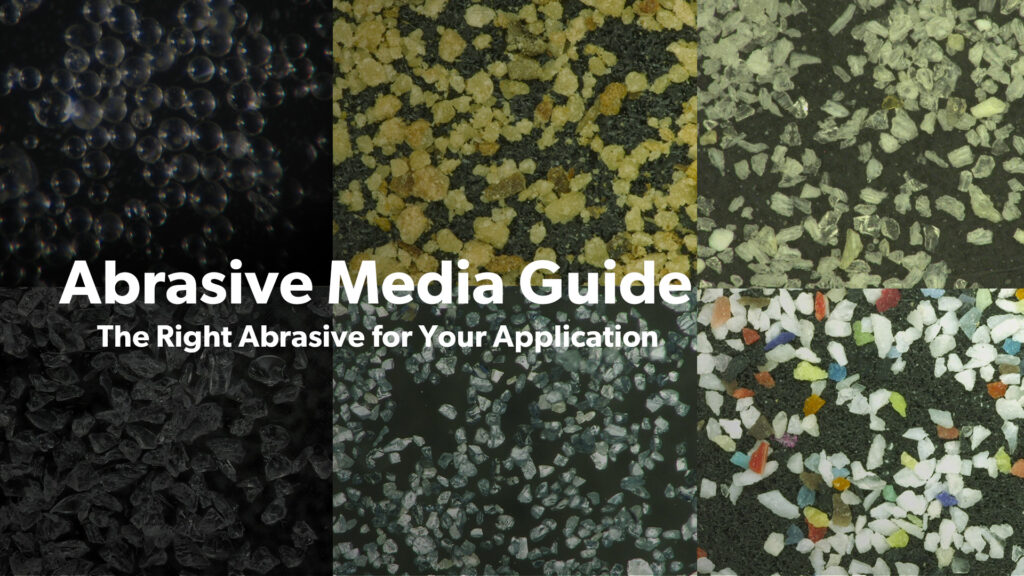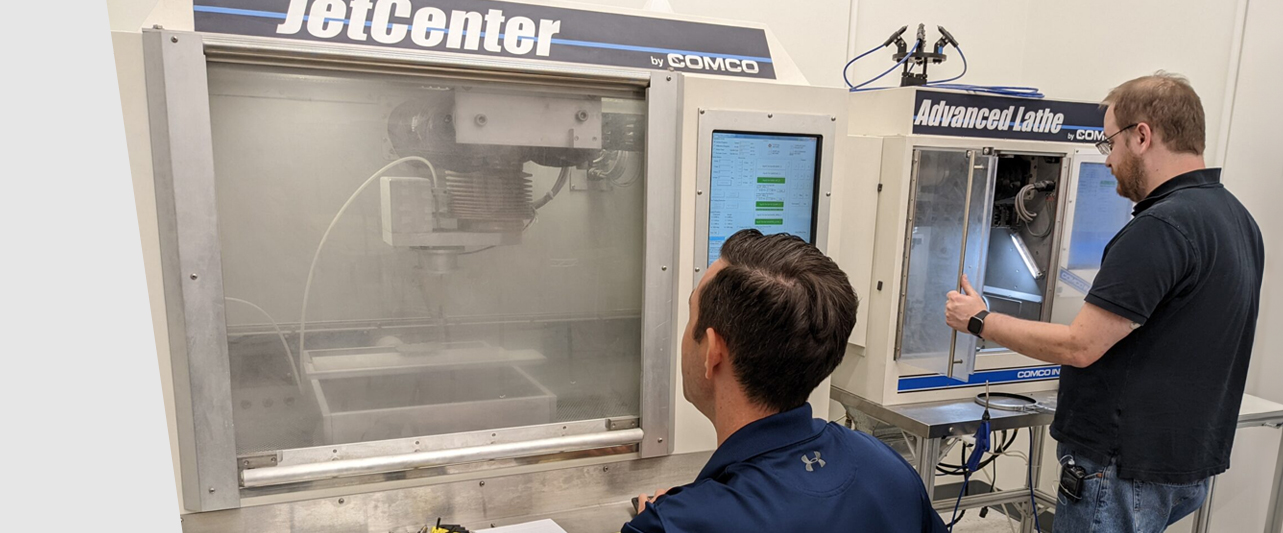Maintenance & Troubleshooting
Before Recycling… Read This.
Resources are precious. Like most of our readers, I’m sure you like the challenge of determining how to get the most mileage out of your tools and supplies. But recycling abrasive collected from your dust collector is inefficient, cost prohibitive, and depending on your part, dangerous. Think of using spent abrasive like trying to make a second pot of coffee with used grounds. To the naked eye, used grounds may look fresh, dark, and even dry enough to yield another pot. But a second pot will likely produce a watered-down coffee-like liquid that delivers a fraction of the caffeine needed to get you through the next staff meeting.
Like coffee, micro-abrasives are most effective fresh.

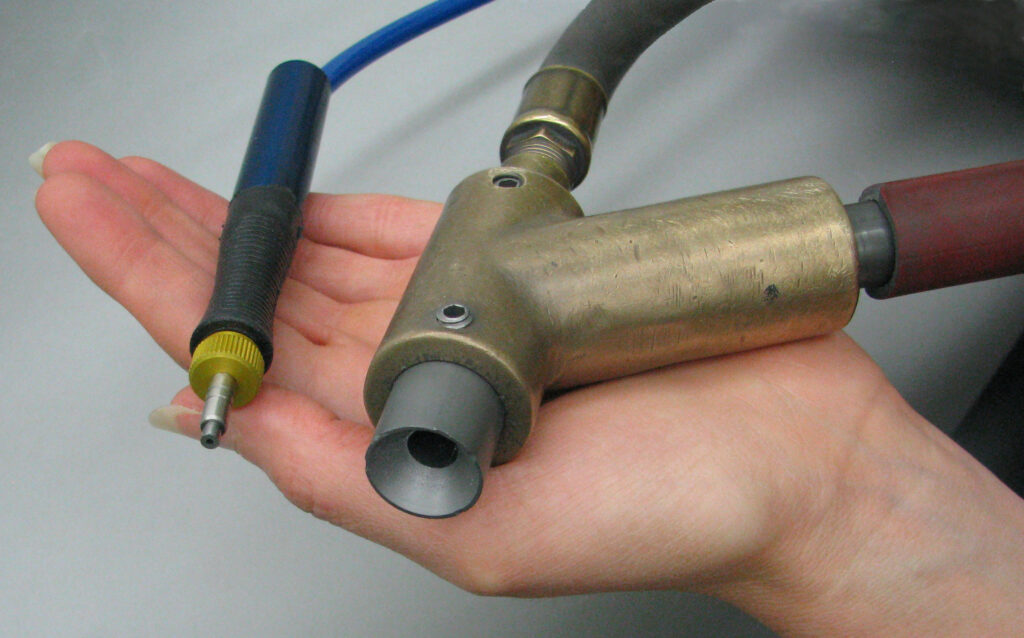
90% of Micro-Abrasive Hits the Target
MicroBlasting is different from cabinet and grit blasting. Ninety percent of abrasive propelled from a MicroBlaster’s nozzle hits the intended target; whereas ninety percent of abrasive from a cabinet or grit blaster usually misses the target. Most micro-abrasive does its job in a single pass.
A quick glance at the nozzle orifices below illustrates why. Look at the extreme focus provided by the MicroBlasting nozzle on the far left.
Particle Breakdown
Every time an abrasive particle hits its intended target, the particle changes properties.
The particle breaks down, decreases in size, dulls or sharpens—depending on its chemical and physical characteristics. For instance, glass bead, which has a round shape and is used to peen surfaces, shatters into crushed glass shards after impact. Shards do not peen. Shards leave gashes. (We told you it could be dangerous.)
Most micro-abrasives break down into finer dust after impact. As you can see below, sodium bicarbonate deteriorates quite a bit. Want to use that spent sodium bicarb pictured at right? Then, you will need to dial in your process again, set aside more time to blast and use twice as much abrasive to get the desired results. And still, the resulting surface may not meet requirements.
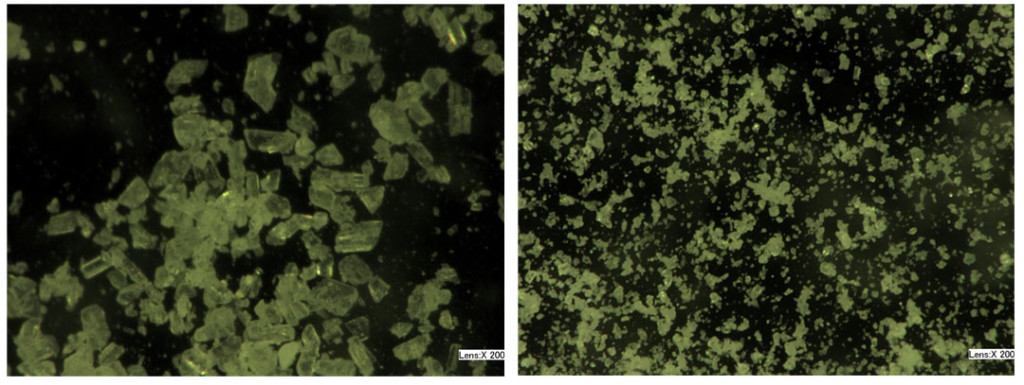

Invaders
Spent abrasive is not the only material collecting in your dust collector. Bits of coating, residue, and surface material removed from your part funnels down there, too, along with dust from other processes in your shop, clothing fibers, stray hair and other small foreign particles found floating through the air. If you introduce these contaminants to your blasting process, you risk clogging your blaster, the nozzle, or worse, damaging your part.
More Parts in Less Time with Less Abrasive = Better Coffee
Again, 90% of abrasive from a micro-abrasive blaster hits the target.
That means almost all of the abrasive particles are fully used in a single pass. Which means:
- you can process more parts in the time allotted,
- and that helps you meet your deadline earlier,
- which, consequently, frees you up to go get a really good cup of coffee before the next staff meeting.*
*Comco does not endorse a specific brand of coffee or a specific coffee shop. But we do champion survival tools and tactics for better staff meetings.
Tip: Specify FRESH Abrasive
Is a job shop making or processing your parts? Request “fresh abrasive” in your spec to get the right tolerance. Job shops tend to be more familiar with cabinet or grit blasting and less aware of the dangers of recycled micro-abrasives.
Applications Lab
Let our experts help find the right solution for your part. We know no two applications are the same. Our Technical Specialists manage sample-part testing and processing from start-to-finish. They actively collaborate with our Sales and Engineering Teams while remaining completely accessible to you throughout the process.

